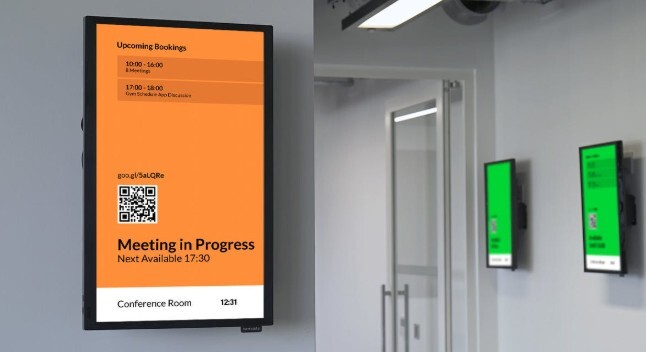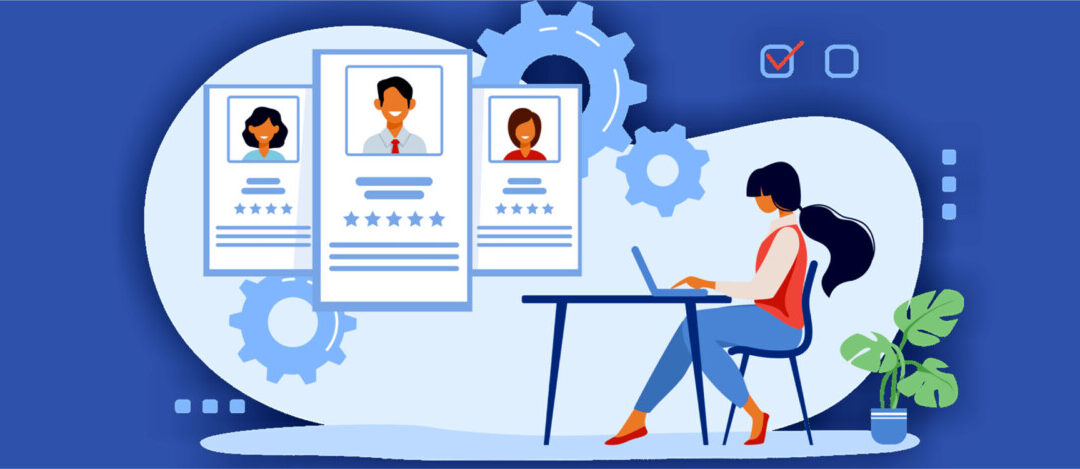For years, schools, colleges, and universities relied on manual or partially automated methods to manage learning and administration. Every administrative aspect of these institutions was managed manually or through disjointed systems, leading to mismanagement and issues with compliance and scalability. However, many institutions are beginning to embrace the power of LMS and ERP solutions to enhance their administrative efficiency and improve learning management for students and employees.
As educational institutions constantly seek innovative ways to enhance learning experiences, improve administrative processes, and elevate overall efficiency, two key technologies have emerged as game-changers. These include Learning Management Systems (LMS) and Enterprise Resource Planning (ERP) systems. By integrating LMS and ERP platforms into their operations, educational institutions can revolutionise how they deliver education, manage resources, and engage with students and faculty.
Understanding Learning Management Systems (LMS)
Learning Management Systems (LMS) are comprehensive software solutions designed to facilitate creating, delivering, and managing educational content and resources. LMS platforms serve as centralised hubs where educators can create courses, upload learning materials, administer assessments, and track student progress. They offer multimedia content support, discussion forums, grading tools, and analytics dashboards, empowering instructors to deliver dynamic and interactive learning experiences.
Leveraging LMS for Enhanced Teaching and Learning
LMS platforms play a vital role in modernising and enhancing the teaching and learning experience in education by providing a versatile and interactive digital environment that supports collaboration, customisation, and continuous improvement. Some top benefits of implementing LMS systems include:
- Centralized Learning Environment: LMS systems provide a centralised online space where instructors can create, organise, and deliver course materials. This makes it convenient for students to access resources and participate in learning activities from anywhere with an internet connection.
- Accessibility and Flexibility: Accessing learning materials and activities allows students to learn at their own pace and schedule, especially for remote or asynchronous learning scenarios.
- Enhanced Collaboration: Collaboration among students and instructors through features such as discussion forums, group projects, and real-time messaging, fostering a sense of community and peer learning is highly conducive to better learning management.
- Customization and Personalization: These platforms enable instructors to customise learning experiences by tailoring content, assessments, and activities to meet the diverse needs and preferences of individual learners, enhancing engagement and motivation.
- Efficient Content Management: By streamlining content creation, management, and distribution, instructors can upload multimedia resources, documents, quizzes, and assignments in various formats for easy access by students.
- Assessment and Feedback Tools: Built-in assessment and feedback tools, including quizzes, surveys, rubrics, and grading workflows, enable instructors to assess student performance and provide timely feedback for improvement efficiently.
- Progress Tracking and Reporting: Tracking mechanisms monitor student progress, participation, and achievement. This allows instructors to identify at-risk students, track learning outcomes, and generate reports for accountability and analysis.
- Integration with Third-party Tools: LMS platforms easily integrate with external tools and applications, such as video conferencing software, plagiarism detection tools, and learning analytics platforms, enhancing functionality and expanding learning opportunities.
- Mobile Compatibility: Many LMS platforms offer mobile-friendly interfaces or dedicated mobile apps, allowing students to access course materials and participate in learning activities using smartphones and tablets, increasing accessibility and convenience.
- Resource Sharing and Reusability: LMS platforms facilitate resource sharing and reusability among instructors by enabling the creation of content repositories, course templates, and learning modules that can be easily adapted and reused across multiple courses.
- Professional Development Opportunities: LMS can easily support professional development initiatives by providing instructors with access to online courses, workshops, and certification programs, enabling continuous learning and skill development.
- Cost Savings and Sustainability: Educational institutions save costs associated with traditional classroom materials, printing, and physical infrastructure while also promoting sustainability by reducing paper usage and carbon footprint.
Understanding Enterprise Resource Planning (ERP) Systems
Enterprise Resource Planning (ERP) systems are comprehensive software platforms integrating various core business functions, including finance, human resources, procurement, and inventory management, into a unified system. While traditionally used in the corporate sector, educational institutions increasingly adopt ERP systems to streamline administrative processes, improve resource allocation, and enhance institutional effectiveness.
Transforming Educational Administration with ERP Solutions
ERP systems offer educational institutions a centralised platform for managing diverse operational tasks, from student admissions and financial aid processing to faculty payroll and facility management. By consolidating data and automating routine processes, ERP solutions enable institutions to operate more efficiently, reduce administrative overhead, and allocate resources strategically.
Moreover, ERP systems give decision-makers real-time access to key performance indicators and actionable insights, facilitating data-driven decision-making and strategic planning. Whether optimising course schedules, allocating budgets, or forecasting enrolment trends, ERP systems empower educational leaders to make informed decisions that drive institutional success.
Benefits Of Implementing ERP Systems in Educational Institutions
Implementing an Enterprise Resource Planning (ERP) system in an educational organisation can offer numerous benefits in admissions, administration, and compliance:
- Centralized Data Management: ERP systems centralise student, faculty, and administrative data into a single database, eliminating data silos and providing a unified view of information across the institution.
- Improved Decision Making: With real-time access to accurate data and analytics, administrators can make informed decisions regarding admissions, resource allocation, academic planning, and strategic initiatives.
- Enhanced Efficiency: Automating routine administrative tasks such as student and employee registration, grading, scheduling, and billing reduces manual effort and improves operational efficiency.
- Streamlined Processes: Standardised and streamlined workflows across departments facilitate collaboration, communication, and information sharing among staff, students, and stakeholders.
- Better Student Experience: Self-service portals for students to access academic records, register for courses, track progress, and communicate with faculty and advisors greatly enhance the student experience and engagement.
- Effective Resource Management: These systems optimise resource utilisation by providing insights into budget allocations, faculty workload, classroom utilisation, and other resources, enabling institutions to maximise efficiency and cost-effectiveness.
- Improved Financial Management: ERP systems integrate financial functions such as budgeting, accounting, procurement, and grant management, providing transparency, accuracy, and control over financial processes.
- Enhanced Compliance and Reporting: Institutions can better comply with regulatory requirements by automating compliance tracking, reporting, and audit trails, reducing the risk of non-compliance and penalties.
- Better Communication and Collaboration: Facilitating better communication and collaboration among stakeholders, ERP systems boost productivity by providing centralised platforms for messaging, document sharing, and project management.
- Adaptability and Scalability: These systems are scalable and adaptable to the evolving needs of educational institutions, allowing them to add new functionalities, modules, and integrations as they grow and change over time.
- Increased Institutional Agility: Institutions can respond quickly to changing regulatory requirements and competitive pressures by providing flexible, agile, responsive platforms for innovation and adaptation.
- Data-driven Insights and Planning: Data analytics and reporting tools for tracking key performance indicators, monitoring trends, and conducting predictive analysis empower institutions to make data-driven decisions.
- Centralized Data: ERP systems can centralise student data, including application materials, transcripts, test scores, and personal information, making it easier for admissions teams to access and evaluate applicant profiles.
- Automated Workflows: Automated workflows can be established within the ERP system to manage the admissions process from application submission to acceptance, facilitating timely communication with applicants and reducing manual tasks.
- Integration with other systems: IDP, AI and ML solutions can easily be integrated with ERP systems, helping organisations automate their data input and validation workflows.
Integrating LMS and ERP for Educational Excellence
While LMS and ERP systems serve distinct purposes, integrating these platforms can unlock greater efficiency and effectiveness across educational institutions. By synchronising student and faculty data between LMS and ERP systems, institutions can streamline workflows, eliminate redundant data entry, and ensure data integrity across systems.
For example, integrating LMS and ERP systems allows institutions to automate course registration processes, synchronise student enrolment data, and streamline billing and payment workflows. Additionally, seamless integration enables institutions to track academic progress, identify at-risk students, and provide targeted interventions to support student success.
How can Clavis Technologies Help with LMS and ERP?
As educational institutions continue to embrace digital transformation, several trends are shaping the future of LMS and ERP adoption. These include the rise of cloud-based solutions, the proliferation of mobile learning technologies, and the growing importance of data analytics and predictive modelling in education. Clavis’ extensive experience in education and learning management, coupled with their world-class ERP solutions can help educational institutions and corporates the world over leverage these technologies to boost academic growth, streamline learning, and transform student and employee experiences.
Final Thoughts
Learning Management Systems (LMS) and Enterprise Resource Planning (ERP) systems are powerful tools that enable educational institutions to enhance teaching and learning, streamline administrative processes, and drive institutional effectiveness. By harnessing the synergies between LMS and ERP solutions, institutions can unlock new opportunities for innovation, collaboration, and academic excellence in the digital age.
ERP vs CRM: Key Differences, Strengths, and How Clavis’ ERP Drives Organizational Success
In the digital age, businesses strive to leverage advanced tools to streamline operations, boost productivity, and foster better customer relationships. Two pivotal software solutions that play a significant role in achieving these goals are Enterprise Resource Planning (ERP) and Customer Relationship Management (CRM) systems. While these tools may seem similar at first glance, they serve distinct purposes and offer unique benefits, and it is important to understand why you may need one or the other—or both in tandem.
1. What is ERP?
ERP stands for Enterprise Resource Planning, a comprehensive software suite that manages and integrates core business processes. These processes often include:
- Finance and accounting
- Human resources
- Supply chain management
- Inventory and order management
- Manufacturing
ERP systems centralise business data, allowing various departments to collaborate seamlessly and make informed decisions based on real-time insights.
Core Features of ERP Systems
- Centralized Data Management: Consolidates information from all business departments into one platform.
- Process Automation: Automates repetitive tasks to improve efficiency.
- Scalability: Can grow with your business, accommodating new functionalities as needed.
- Compliance Support: Helps organisations meet regulatory requirements.
- Advanced Analytics: Provides detailed insights to support strategic decision-making.
2. What is CRM?
CRM, or Customer Relationship Management, is software that focuses on managing a company's interactions with current and potential customers. The primary goal of a CRM system is to improve customer satisfaction, retention, and acquisition through personalised communication and efficient management of sales and marketing activities.
Core Features of CRM Systems
- Contact Management: Maintains detailed records of customer interactions and preferences.
- Sales Pipeline Tracking: Manages leads and monitors the sales process.
- Marketing Automation: Facilitates email campaigns, social media management, and more.
- Customer Support: Enhances post-sale services through ticketing systems and live chats.
- Data-Driven Insights: Helps identify trends to fine-tune marketing and sales strategies.
3. ERP vs. CRM: Key Differences
While ERP and CRM are essential for business success, they cater to different aspects of operations.
|
Feature |
ERP |
CRM |
|
Primary Focus |
Internal processes and operational efficiency |
Customer interactions and relationships |
|
Key Functions |
Accounting, supply chain, HR, inventory |
Sales, marketing, customer service |
|
Target Audience |
Internal stakeholders |
Sales, marketing, and customer support teams |
|
Data Integration |
Focuses on consolidating operational data |
Specialises in customer-centric data |
|
Scalability |
Enterprise-wide |
Primarily focused on customer management |
4. The Strengths of ERP Systems
ERP systems are the backbone of operational efficiency. Their key strengths include:
- Holistic Business View: ERP provides a comprehensive view of business operations by integrating data across departments.
- Cost Reduction: Automating processes reduces manual labour and errors, saving time and money.
- Improved Compliance: Centralized data simplifies regulatory reporting and ensures adherence to standards.
- Inventory Optimization: Enhances inventory management, reducing waste and ensuring timely procurement.
- Agile Decision-Making: Real-time data insights help leaders make swift, informed decisions.
5. The Strengths of CRM Systems
CRM systems shine in the realm of customer relationship management, with benefits such as:
- Enhanced Customer Insights: Tracks and analyses customer preferences to tailor interactions.
- Improved Customer Retention: Personalization and timely communication foster loyalty.
- Streamlined Sales Processes: Automates lead management, reducing manual intervention.
- Marketing Optimization: Helps segment audiences for targeted campaigns.
- Boosted Collaboration: Facilitates alignment between sales and marketing teams.
6. ERP and CRM: Complementary Tools
Though distinct, ERP and CRM systems are complementary and often integrated to deliver maximum value. For instance:
- CRM manages the front-end relationship with customers, while ERP handles back-end processes like inventory and order fulfilment.
- Together, they provide a seamless flow of information, ensuring that customer-facing teams have accurate, up-to-date data on orders and services.
7. Clavis' ERP: The Ultimate Solution for Organizational Success
Clavis' ERP stands out as a robust ERP solution designed to address the multifaceted needs of modern businesses. Here’s how it can drive your organisation's success:
a) Comprehensive Integration
Clavis' ERP integrates seamlessly with existing systems, including CRM platforms, to unify your business processes.
b) Real-Time Data Analytics
With Clavis' ERP, decision-makers can access advanced analytics tools that offer actionable insights into performance, trends, and potential opportunities.
c) Tailored Functionality
Highly customisable to suit the unique needs of businesses across industries, Clavis' ERP works for all—from manufacturing to retail and more.
d) Enhanced User Experience
The platform boasts an intuitive interface, making it easy for employees to adopt and use effectively.
e) Cloud Capabilities
Leverage cloud-based deployment for flexibility, scalability, and cost savings.
9. Choosing the Right Solution for Your Business
When deciding between ERP and CRM—or opting for an integrated approach—consider the following:
- Business Goals: Identify whether your primary focus is operational efficiency (ERP) or customer relationships (CRM).
- Scalability: Choose a solution that can grow with your business.
- Budget: Evaluate the total cost of ownership, including deployment and maintenance.
- Customization: Ensure the platform can be tailored to your specific needs.
Final Thoughts
ERP and CRM systems are indispensable for businesses aiming to optimise operations and enhance customer relationships. While they serve distinct purposes, their integration offers unparalleled value. With Clavis' ERP, you gain a robust tool that streamlines your operations and integrates seamlessly with CRM systems to provide a holistic business solution.
Some other posts you might be interested in.

AI + RPA: The Ultimate Duo to Scale Your Business Faster and Smarter
Scaling a business isn’t just about doing more—it’s about doing more intelligently. As digital transformation redefines the modern enterprise, two technologies have emerged as transformative powerhouses: Artificial Intelligence (AI) and Robotic Process Automation...

Effortless and Effective Digital Signage for Every Organization with Clavisign
Explore how digital signage from Clavisign is transforming business communication and engagement.

15 Applications of Blockchain in Healthcare
"Blockchain" refers to a shared irreversible record of a chain of transactions, each of which is made up of one block, and which is held together by cryptographic keys ("hashes"). These keys or signatures are maintained in shared ledgers and connected by a network of...
